So what are club mosses anyway? They are flowerless and seedless plants in the family Lycopodiaceae, that belong to a very ancient group of plants. they were the dominant plants during the Coal age (360-286 million years ago) and many were shrubs or large trees. We are very likely consuming these plants in the form of coal or petroleum. By 250 million years ago, most of the woody species had died out. There are currently some 400 species known worldwide. You will find club mosses anywhere from the arctic to the tropical regions. Nowadays they no longer dominate plant communities. In arctic and temperate regions, club mosses are terrestrial; whereas in the tropics, they are mostly air plants (attached to branches or tree trunks, although not parasitically) near the tops of trees and are seldom seen.
Walking the Bridge Street conservation area in Barnstable last Friday, I discovered two distinct species of this ancient family:
Lycopodium digitatum (fan clubmoss)
This clubmoss has a cedar-like appearance, low growth, evergreen leaves. Its spreading habit make it ideal for the well-drained eastern woodland landscape. Once established, it spreads quickly by stems that lie just at the surface of the soil. This particular species was particularly abundant in a clearing at higher elevation where the soil was fairly dry.
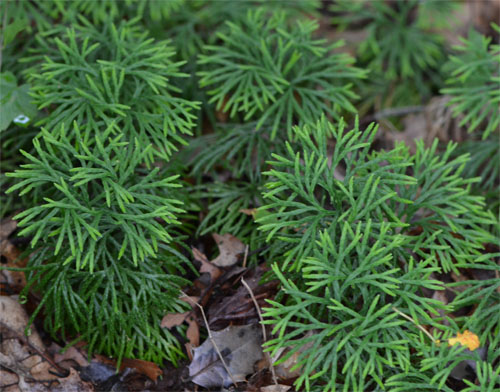
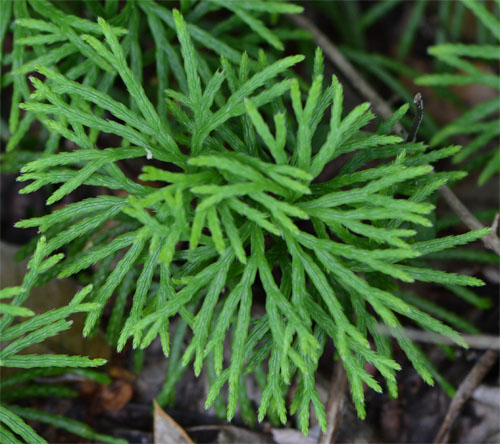
Lycopodium dendroideum (tree groundpine)
This particular clubmoss is somewhat difficult to distinguish from Lycopodium obscurum, and in the past it was even considered a local variety of the latter. To be honest, I may be wrong about what this is exactly – I am by no means a club moss expert – If I am indeed wrong I hope you will correct me. The tree groundpine is being harvested to be used in Christmas decorations. This club moss is found in the wetter and darker areas of this particular wooded area.
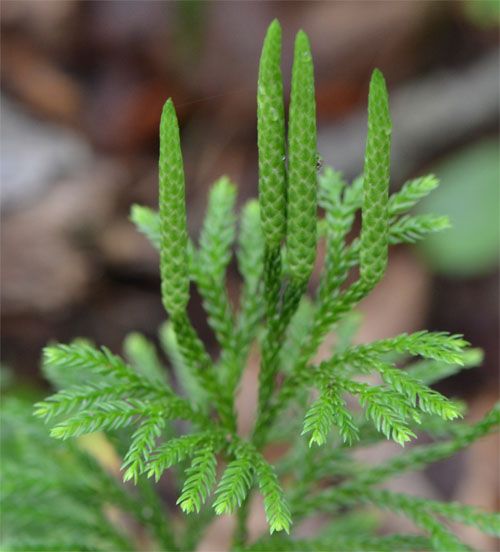
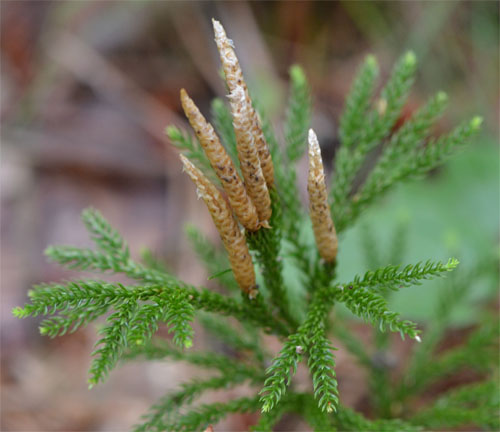
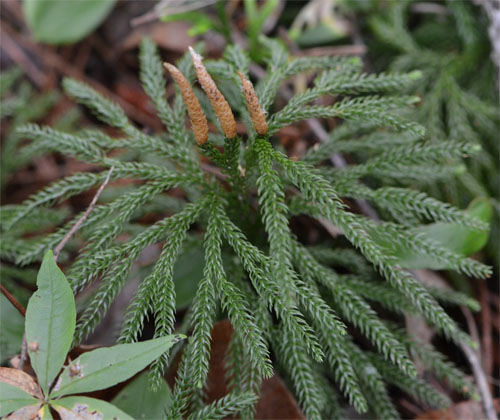
Club Moss is the only thing I remember from my pre-school biology books, they were very large part of the landscape in prehistoric times. It was so great to finally see some.
So glad to know what I am looking at when I see these in the forest! Question about another plant that is foreign to me-It grows from the ground and looks almost like a translucent pine cone/translucent skinny pineapple. Any ideas?
Hi Loren
hmm – I am familiar with Indian pipe and Pinesap, but those are more stalky than conelike. It could be Squaw-root but I have not seen this plant myself (yet) – it can be found in dense oak forest and has a similar life cycle as the other two – it is also parasitic (not meant as a value statement) in that it relies on other plants for its food – it has no chlorophyl to use the sun’s energy to produce nutrients.